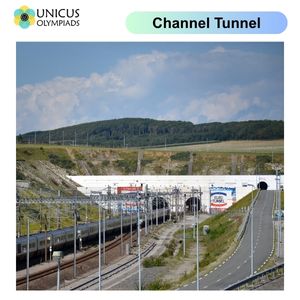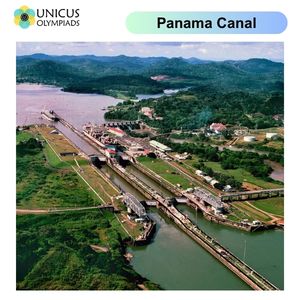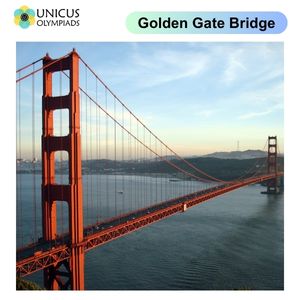How Do Tunnels, Canals, and Bridges Connect Places Across Countries?
Tunnels, canals, and bridges are engineering marvels that have transformed transportation and trade throughout history. These structures connect places that were once difficult to reach due to geographical obstacles such as mountains, rivers, and oceans. By overcoming these barriers, tunnels, canals, and bridges enable the efficient movement of goods and people, fostering economic growth, cultural exchange, and international cooperation. In this article, we will explore the importance of these structures and provide numerous examples from around the world.
Tunnels: Connecting Regions Below Ground
Tunnels are underground passages that allow the passage of vehicles, trains, and pedestrians. They are often used to connect cities and regions separated by mountains, rivers, or other obstacles. Tunnels are particularly useful in urban areas where above-ground space is limited and in locations where building a bridge or road would be impractical.
Examples of Famous Tunnels
- Channel Tunnel (United Kingdom and France): Also known as the "Chunnel," the Channel Tunnel is a 50.5-kilometer (31.4-mile) rail tunnel that connects the United Kingdom with mainland Europe, running beneath the English Channel. It is one of the longest underwater tunnels in the world.
- Gotthard Base Tunnel (Switzerland): The Gotthard Base Tunnel is the world's longest and deepest railway and traffic tunnel, stretching 57.1 kilometers (35.5 miles). It runs through the Swiss Alps and connects northern and southern Switzerland, significantly reducing travel time between the two regions.
- Sydney Harbour Tunnel (Australia): The Sydney Harbour Tunnel connects the northern and southern parts of Sydney, Australia, offering a faster route for cars to travel under the Sydney Harbour.
- Seikan Tunnel (Japan): The Seikan Tunnel is a 53.8-kilometer (33.4-mile) tunnel that runs under the seabed of the Tsugaru Strait, connecting the Japanese islands of Honshu and Hokkaido. It is used by both trains and vehicles and is one of the longest tunnels in the world.

Canals: Facilitating Waterborne Travel and Trade
Canals are human-made waterways that allow boats and ships to pass through areas that would otherwise be impassable. They are commonly used for transportation, irrigation, and flood control. Many canals connect rivers or seas, making it easier to move goods and people across land masses. In addition to economic benefits, canals also have historical significance, having played key roles in trade and military movements in past centuries.
Examples of Famous Canals
- Panama Canal (Panama): The Panama Canal is one of the most famous and important canals in the world. It connects the Atlantic and Pacific Oceans, reducing the need for ships to travel around South America. The canal is a vital international trade route, allowing faster transportation of goods between the two oceans.
- Suez Canal (Egypt): The Suez Canal connects the Mediterranean Sea to the Red Sea, allowing ships to travel between Europe and Asia without having to navigate around Africa. This canal is one of the most significant shipping lanes in the world.
- Erie Canal (United States): The Erie Canal connects the Hudson River to Lake Erie, providing an important route for goods to travel between the Atlantic Ocean and the Great Lakes. Completed in 1825, it played a crucial role in the expansion of trade in the United States during the 19th century.
- Grand Canal (China): The Grand Canal is the longest man-made canal in the world, stretching over 1,700 kilometers (1,100 miles). It connects the Yangtze and Yellow River systems and is a major route for transporting goods between northern and southern China.

Bridges: Spanning Land and Water to Unite Regions
Bridges are structures that span a gap, such as a river, valley, or road, allowing vehicles, trains, or pedestrians to cross. Bridges have played a vital role in connecting cities, facilitating trade, and promoting cultural exchange. Modern bridge design has evolved to accommodate increasingly heavy loads and longer spans, with technological innovations allowing for the construction of monumental structures.
Examples of Famous Bridges
- Golden Gate Bridge (United States): The Golden Gate Bridge in San Francisco is one of the most iconic bridges in the world. It spans the Golden Gate Strait, connecting the city of San Francisco to Marin County, California.
- Tower Bridge (United Kingdom): Tower Bridge in London is a bascule and suspension bridge that spans the River Thames. It is one of the most recognizable landmarks in London and has been a crucial part of the city's transportation system since its opening in 1894.
- Brooklyn Bridge (United States): The Brooklyn Bridge connects Manhattan and Brooklyn in New York City. It is one of the oldest suspension bridges in the United States, and its design and construction were groundbreaking when completed in 1883.
- Akashi Kaiky Bridge (Japan): Also known as the Pearl Bridge, the Akashi Kaikyo Bridge is the longest suspension bridge in the world, spanning 3,911 meters (12,831 feet) across the Akashi Strait. It connects the Japanese islands of Honshu and Shikoku.
- Millau Viaduct (France): The Millau Viaduct is the tallest bridge in the world, standing at a height of 343 meters (1,125 feet) above the Tarn River. It connects the cities of Millau and Larzac in southern France and is considered an architectural marvel.






